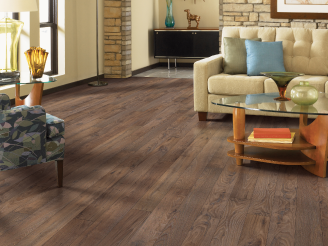
How the Vinyl Plank Flooring Really Works
Good preparation is half the job. First of all, make sure that you do not have enough experience with cutting vinyl or a similar fabric. For example, first practice on a leftover. You quickly cut off too much vinyl if you don’t know exactly how much force you should put. A visit to https://empirefloors.com/cost-to-install-vinyl-plank-flooring/ makes the entire process perfect now.
The Results
So pay attention to this. However, the cutting itself ensures that there is much less messy compared to, for example, sawing. And that is very nice for cleaning up afterward.
When you are confident in your case, you can proceed to measure the space. Always keep an extra 10 centimeters, so that you have too much rather than too little vinyl at home. After all, there may be a cutting loss; having a few extras in case of an emergency is always a smart idea.

Also take into account places for which you will have to cut the vinyl: pipes, niches or doorposts. Allow the vinyl to acclimatize for around 12 hours, and ensure that the temperature in the room never drops below 18 degrees Celsius.
Check the subfloor
A good underlay is essential for the vinyl floor that you will lay over it later. There must be no unevenness in a subfloor, it must be smooth and smooth. In addition, the subfloor must be thoroughly clean, so that it will not cause any problems for the vinyl later.
Also check with a wooden subfloor whether there are no loose particles left behind, such as nails. When the whole is clean, smooth and even, you can proceed to the laying of the vinyl.
Laying vinyl
You have several options for laying vinyl, mainly depending on the type of vinyl floor you have chosen. We list the two most common vinyl floors.
Placing click vinyl is similar to laying laminate. Lay it lengthwise if you want the space to look longer, or widthwise if you want the space to look wider.
Start along the wall with the first strip. Place a spacer between the vinyl and the wall, so that you have room for the skirting boards. Snap the vinyl together (press it firmly, possibly with a hammer), until you reach the end of the strip.
You will probably have to cut it a little so that the last part fits. Mark the difference, and then cut off the remainder. You can then start the next row again with the remaining strip, which you click onto the side of the previous row.
And so you continue until everything is. Then it’s a matter of fixing the baseboards, and you’re done!
Vinyl sheet
You can also buy a large piece of vinyl, which you place in one go. This does increase the level of difficulty. Check-in advance if the subfloor is 100% smooth and clean.
- Any unevenness can have a negative influence on the vinyl. There is a self-adhesive variant, but it’s not a problem if you don’t have it.
- Use double-sided tape instead to attach the vinyl floor.
- Roll out the vinyl in the room and let it acclimatize for 24 hours. Don’t forget to turn off the floor heating! When the 24 hours are over, place the vinyl as good as possible so that it fits.
- Press from the middle to the sides. You probably have something leftover, but that’s okay: you can trim it later with a knife (tip: there are also vinyl cutters).
- When you have trimmed everything so that it fits, place the double-sided tape along the edges on the subfloor. Then attach the vinyl feed.
